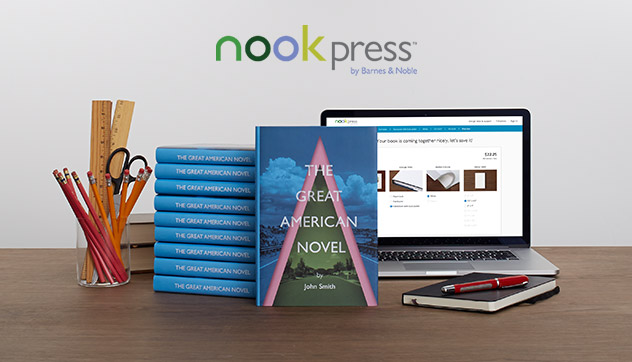A Step Forward in Publishing

Shadin Al-Dossari ‘18 / Emertainment Monthly Assistant Editor
There are definitely pros and cons to both self-publishing, also referred to as indie publishing, and traditional publishing. One big difference between the two is that with self-publishing, the author doesn’t have to worry about whether the editor will like something, because they are their own editor. The author also sets their own timeline for the publication of the book.
Traditional publishing has a leg up on self-publishers in the area of marketing. Built into a publishing contract is a marketing plan including book signings, press tours, and other events to generate buzz for both the author’s name and book title. Alternatively, if an author goes the self-publishing route, it’s up to them to get their own name out there. Sales rely on people hearing about the book—and therefore, the amount of money a self-publishing author makes depends on how much work they’re willing to put in. A marketing trick is to get in contact with book bloggers and reviewers, so that they can spread the word to the reading community. Another advantage of being traditionally published is that the author has an agent who handles the selling of audiobook, foreign, and television or film rights.
As an unfortunate result of self-publishing, an increasing number of authors are victims of plagiarism. In today’s digital age, where anyone can easily publish a book online, some self-published books are partly plagiarized. Because there are so many self-published manuscripts out there, it’s hard to sift through all of them to find well-written work. Often, readers will be more skeptical of the quality of a self-published book compared to a traditionally published book. This phenomenon, coupled with many books containing bad grammar—a sure sign of a lack of good editing—has given self-publishing a bad reputation in the past.
Generally, working with a traditional publisher means physical copies of one’s book are sold in stores, while self-publishing means only having an eBook version of one’s book. But that is starting to change. Last June, Barnes and Noble announced that they will be selling self-published authors’ books in print. Authors will also be able to have in-store book signings where they can meet and interact with readers. However, there’s a catch; this program is only eligible for Nook Press authors, those with eBooks that have sold one thousand copies in the past year (Barnes and Noble). Those eligible can submit their books to Barnes and Noble’s Small Press Department for review. It will be interesting to see how this program is implemented in the future, especially because with this move, Barnes & Noble is becoming more of a competitor for Amazon.
With eBooks continually on the rise, it’s safe to say there will be an increase in self-published authors. The lower price of eBooks will also play a factor in the future of publishing. Many authors cite creative freedom as the main draw of self-publishing—self-published authors get to design their book’s interior and cover. Additionally, the fact that indie authors are appearing on bestseller lists is encouraging other authors to self-publish. Some well-known self-published books that later were acquired by traditional publishers include Fifty Shades of Grey by E. L. James and Still Alice by Lisa Genova. In both cases, the books were so popular they became movies.
A rise in popularity of self-published books could lead to them being put in public libraries. At the moment, the majority of self-published books are romance novels; hopefully, as more authors self-publish, this will expand into other genres.